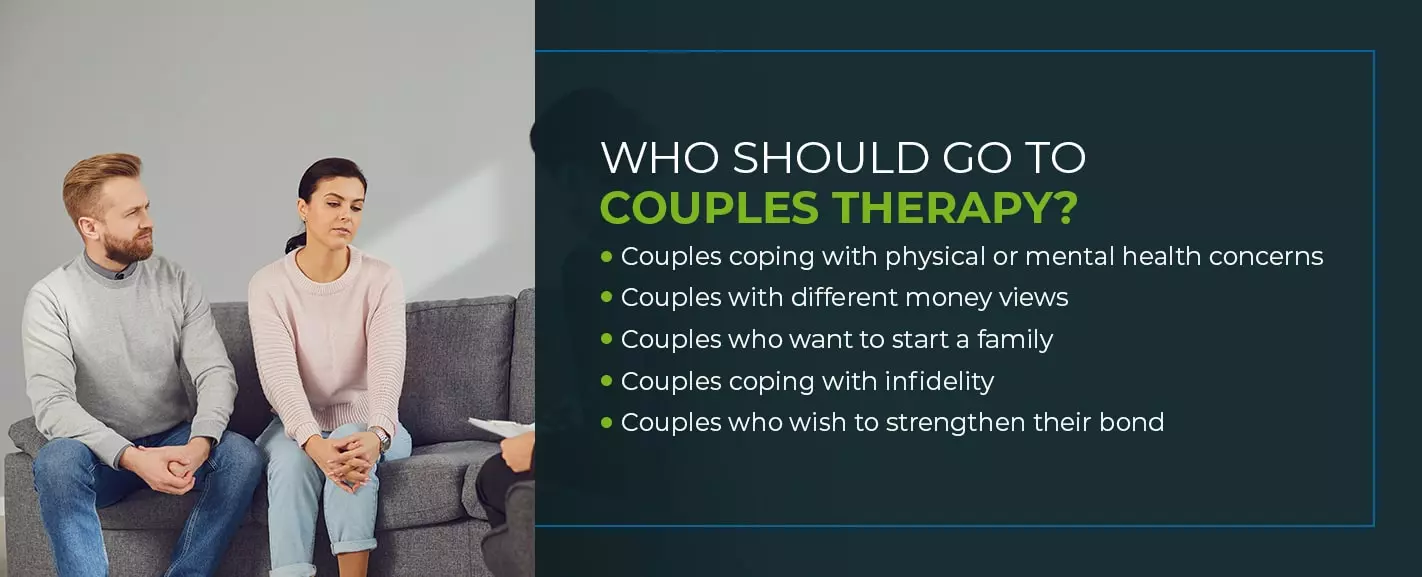The 45-Second Trick For Aim Point Counseling
Table of ContentsSee This Report on Aim Point CounselingSome Known Factual Statements About Aim Point Counseling The Main Principles Of Aim Point Counseling Little Known Questions About Aim Point Counseling.Aim Point Counseling for BeginnersRumored Buzz on Aim Point Counseling
The longitudinal design includes a pre-treatment survey and two follow-up surveys at 3- and 12-months post-intervention. The study is embeded in 8 Relationships Australia Victoria centres, across cosmopolitan, outer suburban areas, and regional/rural websites. Relationships Australia, a non-government organisation, is the biggest service provider of pair coaching and partnership services in Australia.
In Australia, the mean size of marital relationship before separation is 8.8 years, and around half of all divorces involve couples with kids [1] These high prices of partnership breakdown have actually been consistently related to unfavorable health and wellness consequences for both grownups and youngsters complying with divorce/separation. These consist of isolation from assistance networks, and reduced revenue and criterion of living for both grownups and kids [3], issues of commitment over children for males, and depression and loss of identity for women [4,5]
Aim Point Counseling Fundamentals Explained
The results of divorce and splitting up can be harmful, research indicates that high connection discord in undamaged pairs is also most likely to have negative outcomes.
Additionally, variables that influence the end results of these solutions require extensive examination. Research study to day has determined both couple and specific aspects that might add to connection dissonance. These include partnership satisfaction and commitment at the pair level, and clinical depression at the private level. Robust research to review relationship-enhancing interventions in the neighborhood are limited.
More About Aim Point Counseling
Partnership satisfaction has been one of the most usual end result variable recognized in greater than 200 analyses of couple counselling [11,12] Research studies have actually located considerable improvements in partnership contentment from pre- to post-treatment [13,14] and over the course of one to 2 years following therapy [15] In these studies, relationship satisfaction was most frequently evaluated making use of the Dyadic Adjustment Range (DAS) [16] While most researches indicate renovations in relationship contentment following couple coaching, they are restricted by the samples and steps made use of, largely temporary follow-up time frames, and evaluations that do not account for the dyadic nature of couple data - how much does marriage counseling cost. Partnership commitment, based upon steps such as the Commitment Supply (CI) [19], is one more generally explored connection outcome.
To sum up, study shows that couple-specific variables as well as specific factors may forecast the end results of couple coaching and partnership solutions. The causal direction of these connections, however, is much less clear. These observations are important, since, to warrant and direct the application of partnership solutions such as couple therapy, empirical evidence must explore both the end results of partnership solutions and the variables that forecast successful treatment.
, at the very least in some European nations.

We currently recognize little concerning the profiles of couples who seek connection education and learning compared to those who look for relationship counselling, or the results of these programs. Nevertheless, unscientific evidence recommends that there may be substantial distress amongst at the very least some couples seeking relationship education and learning. Relationship education programs vary from pair counselling as they are generally extremely structured, conducted in teams, and concentrate on a mix of 4 components; understanding, feedback, cognitive modification, and abilities training [45]
Rumored Buzz on Aim Point Counseling
Feedback includes participants completing questionnaires regarding their partnership (e.g. steps of social troubles), and obtaining information on what their scores suggest. Cognitive-behavioural strategies advertise altering cognitions to help with positive relationships. These might include advertising practical attributions/expectations around unfavorable companion behaviour [46] Finally, in abilities training, pairs attend lectures or discussions on connection skills, and practice these throughout facilitator-led activities [ 45]
These impacts have continued for as much as 4 years in some studies [47] Nonetheless, these meta-analyses highlight restrictions in the current literature on partnership education and learning. Specifically, the bulk of researches involved pairs from upper socio-economic backgrounds who were not experiencing high relationship disharmony [47,48] This example profile may not anonymous stand for clients that usually provide for relationship education and learning.
Aim Point Counseling - An Overview

Extremely little study has analyzed the relative advantages of couple therapy and partnership education and learning programs. As clients are most likely to self-select into these service kinds, it is unclear whether particular connection distress profiles existing per service kind, or indeed whether there is a communication between offering profile, solution type and outcome.
(https://www.reverbnation.com/artist/a1mpoint)
Thus, we have actually consisted of a 12-month follow-up to assess longer-term fads and results. The study makes use of a number of standardized result measures because some prior examinations have actually been criticised for their absence of standard analysis [50] Finally, the usage of statistical evaluations that think self-reliance of data, such as t-tests, or ANOVAs, has actually been prevalent in previous researches [ 44,49]
We recommend to use multi-level statistical modelling treatments that control for the inter-dependence of pair data to analyze any type of treatment effects. The certain purposes of the ECC study are to: 1. Map accounts of customers looking for neighborhood agency-based couple therapy vs. partnership improvement programs in terms of socio-demographic and relationship indications (such as partnership complete satisfaction, relationship commitment, interpersonal troubles, and reasons for going to), in addition to wellness (such as anxiety, general wellbeing) and health solution use (eg.
Determine whether pair counselling and relationship education and learning solutions improve three- and twelve-month end results for connection satisfaction, commitment, and depression, utilizing statistical evaluations ideal to pair information. porn addiction. Figure out the relative payments of customer variables (private and pair) and therapy/education factors to end results at 3- and 12-months, and to sustainability of outcomes over time.
A Biased View of Aim Point Counseling
Multi-level modelling to figure out pre-post distinctions, managing for dyadic (couple) level. To add to the literature assessing the effectiveness of community-based pair therapy. The outcomes will assist scientific decision-making in community-based partnership service settings, and specialist training. 3. To determine the loved one contributions of client/couple and treatment variables to outcomes at 3- and 12-months, and to sustainability of results over time.